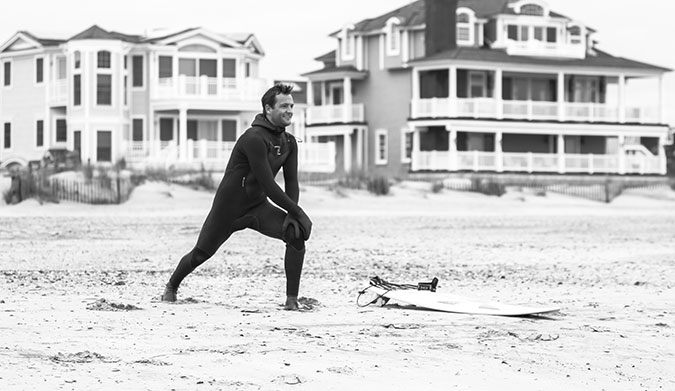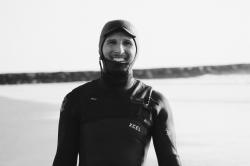
This is important. You should do it.
There are few things worse than paddling out only to have your surf session cut short due to an injury. Let me know if this sounds familiar: you pull up to the beach. Stoked, you hurriedly get into your suit, gather your gear, and high-tail it down to the water’s edge. After about two seconds of flailing your arms back and forth and doing three squats, you’re running full speed into the water. Sound about right?
For years, I used the above technique as my pre-surf stretching routine, only to develop shoulder strains and backaches post-session. According to the Occupational Safety and Health Association, 39% of all injuries in the workplace are muscle sprains and strains. Surfing is a high impact, fast twitch sport incorporating the use of nearly every muscle group. The act of surfing places especially high demands on the shoulders, back, and neck. All three groups of muscles are on the repeat offender list in nearly every physical therapy office nationwide. So what can we do to protect ourselves from falling victim to injury? The answer is simple: spend 5-10 minutes before you surf to properly stretch your muscles.
Because I’m a photographer and not a physical therapist, fitness coach, or personal trainer, I have long struggled with finding a proper warm up that not only prevents injury but keeps me engaged enough to do every time. Should I be doing static movements? Dynamic stretching? Deep breathing? Lost and overwhelmed by so many conflicting modalities, I turned to some of my fellow Inertia contributors for answers on the best pre-surf warm up routines. The links below will get you started on the path to injury avoidance and better, longer, more dialed in surf sessions.
1. Ash Boddy’s Surf Flexibility: Ditch the Aimless Stretching
2. Ian Walsh’s Preparing for Winter Swells
3. Tracy Ann Axel’s A Dynamic Pre-Surf Warm-Up
Although these articles are geared towards the pre-surf warm-up, it is also essential to perform a post surf cool-down in addition to taking in the proper hydration and nutrients. Maintaining the body when not in the water will aid in your quest for improved surfing.

